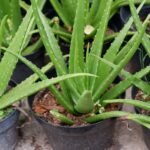Looking to make your home a bit healthier? A super simple way to do that is by bringing in some good indoor plants that clean the air. These leafy plants not only liven up your space but also work to filter out toxins and make the air you breathe better. In this guide, we’re going to share the top 8 indoor plants that are great for air purification, plus some easy care tips to keep them thriving. Let’s jump in and see how to change your home into a fresher, greener spot!
Table of Contents
ToggleThe Role of Indoor Plants in Improving Indoor Air Quality
Before you get down on a list of good indoor plants that clean the air you must know their role in cleaning up the air. Indoor plants aren’t just there to make your space look nice; on the other hand, they’re a great option for cleaning up the air, too. These green buddies take in carbon dioxide and let out oxygen, which is a win-win. Plus, some plants can even soak up nasty toxins like formaldehyde, benzene, and other chemicals right through their leaves.
Types of Pollutants Removed by Indoor Plants
A good indoor plants that clean the air will help you get rid of the following toxins in the air:
|
Pollutant |
Source |
| Formaldehyde |
Adhesives, paints, and household products |
|
Benzene |
Plastics, synthetic fibers, and household items |
| Trichloroethylene |
Cleaning products, adhesives, and household products |
|
Xylene |
Printing inks, adhesives, and other household products |
How Do Indoor Plants Purify the Air?
Getting to know how plants clean the air shows off their awesome ability to improve our indoor spaces naturally. Here’s the scoop:
- Photosynthesis Process: Plants help purify the air by soaking up carbon dioxide and sending out oxygen.
- Absorption of Toxins: Some plants can soak up toxins floating in the air, like volatile organic compounds (VOCs).
- Pollutant Breakdown: These toxins are taken in through the leaves and broken down in the plant’s roots.
Note: To get the best results, it’s a good idea to have at least two decent-sized good indoor plants that clean the air every 100 square feet of indoor area.
8 Best Indoor Houseplants For Air Quality
To help you decide which indoor plants are best suited to clean the air in your home, here are our top picks along with the toxins they absorb, their maintenance requirements, and a little about each plant.
1. Spider Plant (Chlorophytum comosum)
Toxins Absorbed: Formaldehyde, xylene, toluene
Maintenance: Prefers bright, indirect light but can tolerate low light. Water moderately, allowing the soil to dry out between waterings.

The Spider Plant is famous for its curvy leaves and cute little baby plantlets, called “spiderettes,” that hang down from the main plant. It’s super easy to take care of, which makes it great for newbies. Not only does it clean the air, but it’s also a tough plant that can do well in all sorts of environments.
2. Snake Plant (Sansevieria trifasciata)
- Toxins Absorbed: Formaldehyde, xylene, toluene, benzene, trichloroethylene
- Maintenance: Thrives in low light and requires minimal watering. Allow the soil to dry out completely between waterings.

The Snake Plant, which people usually call “Mother-in-Law’s Tongue,” has cool, tall leaves that look pretty unique. It’s super tough to kill and does a fantastic job at cleaning the air, especially in bedrooms, since it turns CO2 into oxygen while you sleep.
3. Peace Lily (Spathiphyllum)
- Toxins Absorbed: Ammonia, benzene, formaldehyde, trichloroethylene
- Maintenance: Prefers low to bright indirect light. Keep the soil consistently moist but not waterlogged.
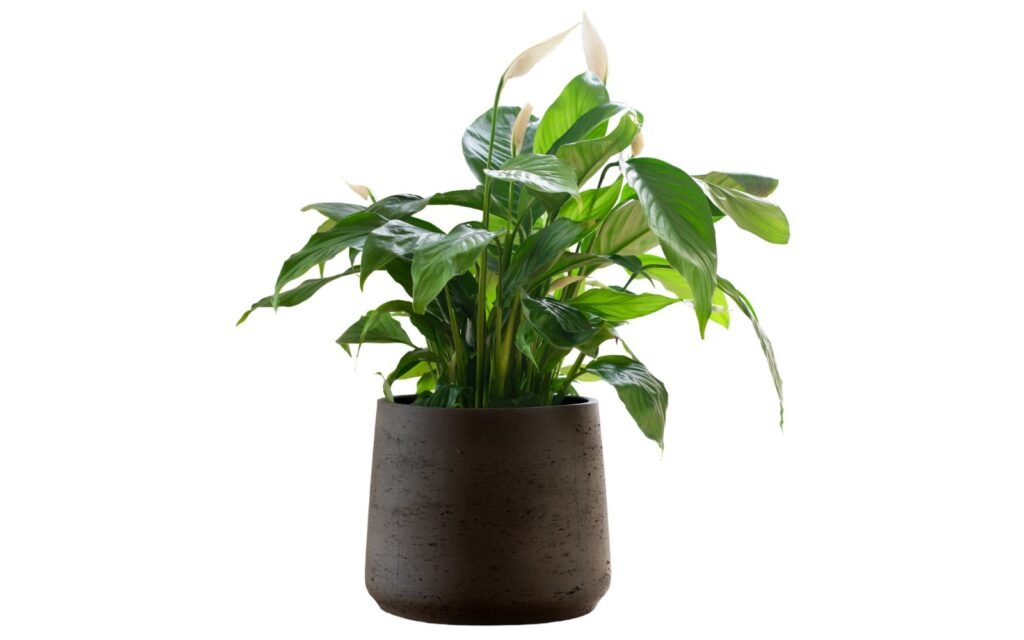
The Peace Lily is well-known for its beautiful white flowers and rich green leaves. Not only does it improve the air quality, but it also brings a calm vibe to any room. This plant is really good at taking moisture out of the air, which keeps the humidity at a comfy level.
4. Aloe Vera (Aloe barbadensis miller)
- Toxins Absorbed: Formaldehyde, benzene
- Maintenance: Needs bright, indirect sunlight. Water deeply but infrequently, allowing the soil to dry out between waterings.
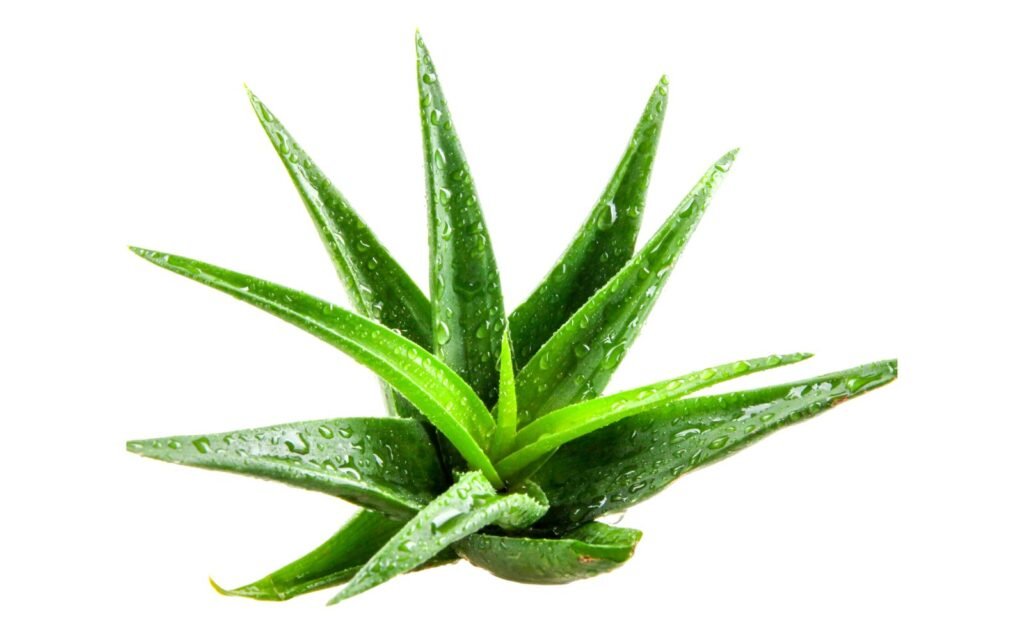
Aloe vera is super famous for its healing power; however, a very few know about it’s air purifying properties. Further, this cool plant not only freshens up the air, but it’s also a handy touch for your home. So you can have multiple benefits of healthy skin, fresh air and great ambience from one plant.
5. Bamboo Palm (Chamaedorea seifrizii)
- Toxins Absorbed: Formaldehyde, benzene, trichloroethylene
- Maintenance: Prefers bright, indirect light. Keep the soil moist but not soggy, and mist the leaves regularly.

The Bamboo Palm is a popular choice for adding a tropical feel to your indoor space. With its tall, slender stems and lush fronds, it not only purifies the air but also enhances the aesthetic of your home. It’s especially effective at filtering indoor air pollutants and is safe for pets.
6. Golden Pothos (Epipremnum aureum)
Toxins Absorbed: Formaldehyde, benzene, xylene
Maintenance: Tolerates low light but prefers bright, indirect light. Water when the top inch of soil is dry.
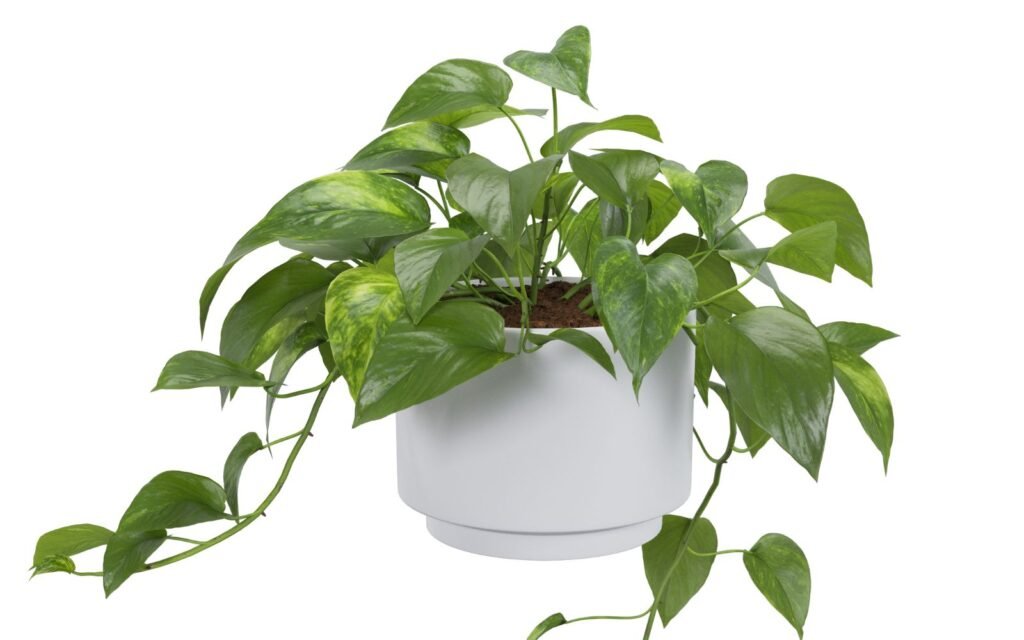
The Golden Pothos is well-known for its trailing vines and heart-shaped leaves. This plant is incredibly adaptable and can be grown in hanging baskets or trained to climb. It requires minimal care and is excellent for improving air quality.
7. Dracaena (Dracaena spp.)
- Toxins Absorbed: Benzene, formaldehyde, trichloroethylene, xylene
- Maintenance: Prefers bright, indirect light. Water when the top inch of soil is dry, and avoid overwatering.
Dracaena plants are available in many different types, each featuring unique colors and leaf shapes.Not only do they help improve air quality, but Dracaenas can also handle a bit of neglect, making them great for folks who are new to taking care of plants.
8. Weeping Fig (Ficus benjamina)
- Toxins Absorbed: Formaldehyde, xylene, toluene
- Maintenance: Needs bright, indirect light. Water moderately, allowing the top layer of soil to dry out between waterings.
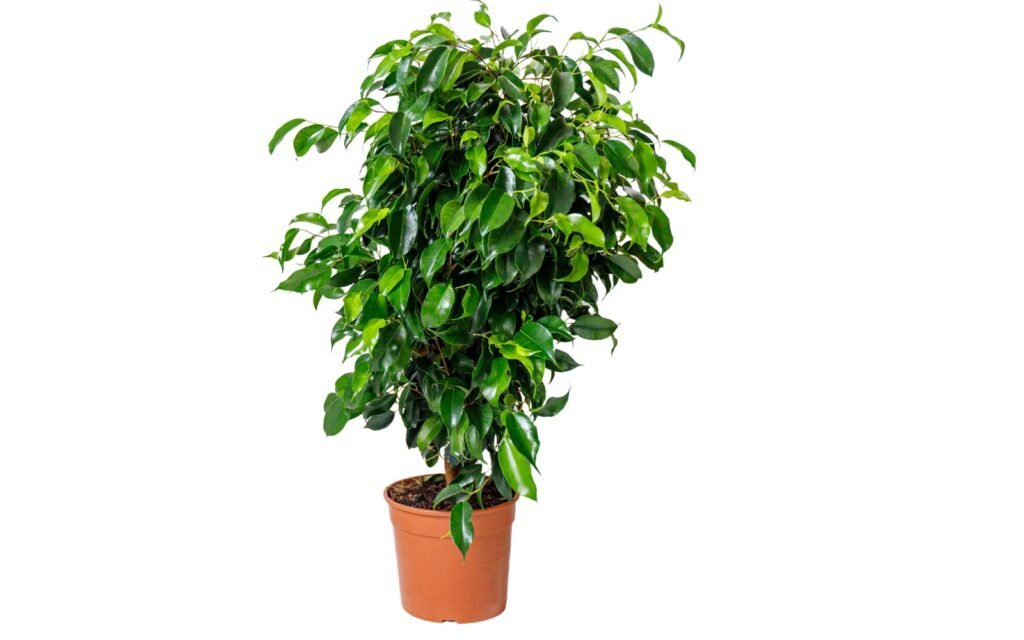
The Weeping Fig is a timeless indoor tree with its droopy branches and shiny leaves. Its graceful look and size make it an eye-catching centerpiece for any space. This plant is super easy to care for.ctive at removing toxins and prefers consistent care, rewarding you with lush growth in return.
These 8 good indoor plants that clean the air are great for making your indoor space healthier because they clean the air, plus they add a chill vibe and some beauty to your place.
3 Steps To Care Of Your Air-Purifying Indoor Plants
The good indoor plants that clean the air need care to plants to keep working their magic. Here’s what you can do to keep them healthy.
- Watering and Humidity Needs: Most plants like soil that drains well and moderate watering. Just be careful not to drown them.
- Light and Temperature Needs: Most of these green buddies do best in bright, indirect light and temps around 65-75°F. Make sure they’re getting enough sunlight to grow strong.
- Fertilizing and Pruning Tips: Feed your plants during the growing season to help them thrive. Don’t forget to trim them regularly to keep their shape and let in some air.
An Extra Air Purifying Trick Using Indoor Plants
It must be kept in mind that good indoor plants that clean the air won’t get rid of all pollutants, especially in bigger or dirtier spaces. That’s why pairing up plants with an air purifier can be a smart move. Together, they can tackle pollutants, deliver fresher air, and make your indoor space more pure and clean. Mixing plants and tech is the best way to boost your air quality.
Wrapping Up
Thus good indoor plants that clean the air are the best means to tackle air pollutants at your home. Additionally, not only do these plants help remove toxins, but they also bring life and vibrancy into your home. Whether you’re new to plant care or an experienced gardener, there’s a plant on this list that’s perfect for you.
FAQ
Q: How many good indoor plants that clean the air do I need for my home?
A: It’s generally recommended to keep at least two air-purifying plants per 100 square feet for effective results.
Q: Are air-purifying plants safe for pets?
A: Some plants, like Peace Lilies, can be toxic to pets. Be sure to research each plant and choose pet-friendly options if you have animals at home.
Q: Can air-purifying plants replace an air purifier?
A: While plants are effective at removing certain toxins, they may not replace the need for an air purifier entirely, especially in larger or highly contaminated spaces.



